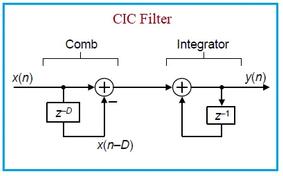Aliasing and Anti-Aliasing Techniques : Key differences
Advertisement
This article explains the basics of aliasing and introduces the anti-aliasing technique used to combat it. Aliasing is a phenomenon that occurs during analog-to-digital (A/D) conversion due to insufficient sampling rates.
Aliasing Explained
Aliasing arises from inadequate sampling during the A/D conversion process. Let’s break down how it happens.
Figure 1a: Imagine an analog continuous spectrum that’s band-limited to +B on the upper end and -B on the lower end.
Sampling the Signal: When this signal is sampled at a frequency (Fs) greater than 2B (Fs > 2B), the spectral replications are separated at the folding frequency, which is approximately +/- fs/2. This scenario is depicted in Figure 1b.
The relationship fs >= 2B is known as the Nyquist Criteria.
 Figure 1: Illustration of Aliasing
Figure 1: Illustration of Aliasing
Undersampling and Spectral Overlap: What happens if we choose a sampling frequency fs = 1.5B? This leads to spectral replications where the lower and upper edges exist around +fs and -fs. This is called undersampling. These spectral replications then overlap with the original sampled spectrum centered around 0 Hz. This overlapping condition is known as aliasing.
Anti-Aliasing Technique
In real-world scenarios, analog signals often contain noise energy. If we sample this signal at a rate greater than 2B, we can prevent spectral replications from overlapping. However, the resulting discrete spectrum will still contain noise energy between -fs/2 and +fs/2.
To mitigate this noise, an analog low-pass anti-alias filter is used to attenuate unwanted signal energy above +B and below -B Hz. By using an anti-alias filter, spectral aliasing can be avoided at the output of the A/D converter. This is demonstrated in Figure 2. The cutoff frequency of the anti-aliasing filter should align with the bandwidth of the signal of interest.
 Figure 2: Anti-Aliasing using a Low Pass Filter
Figure 2: Anti-Aliasing using a Low Pass Filter
Aliasing Frequency: Key Concepts
-
Nyquist Criterion: A signal with bandwidth (B) should be sampled with a sampling frequency greater than 2B to avoid aliasing.
-
Nyquist Frequency: At a given sampling frequency (fs), the signal to be sampled should have a bandwidth smaller than the Nyquist frequency (Fs/2).
-
Folding Frequency: Fs/2 is also known as the folding frequency or aliasing frequency.
Advertisement
 RF
RF







